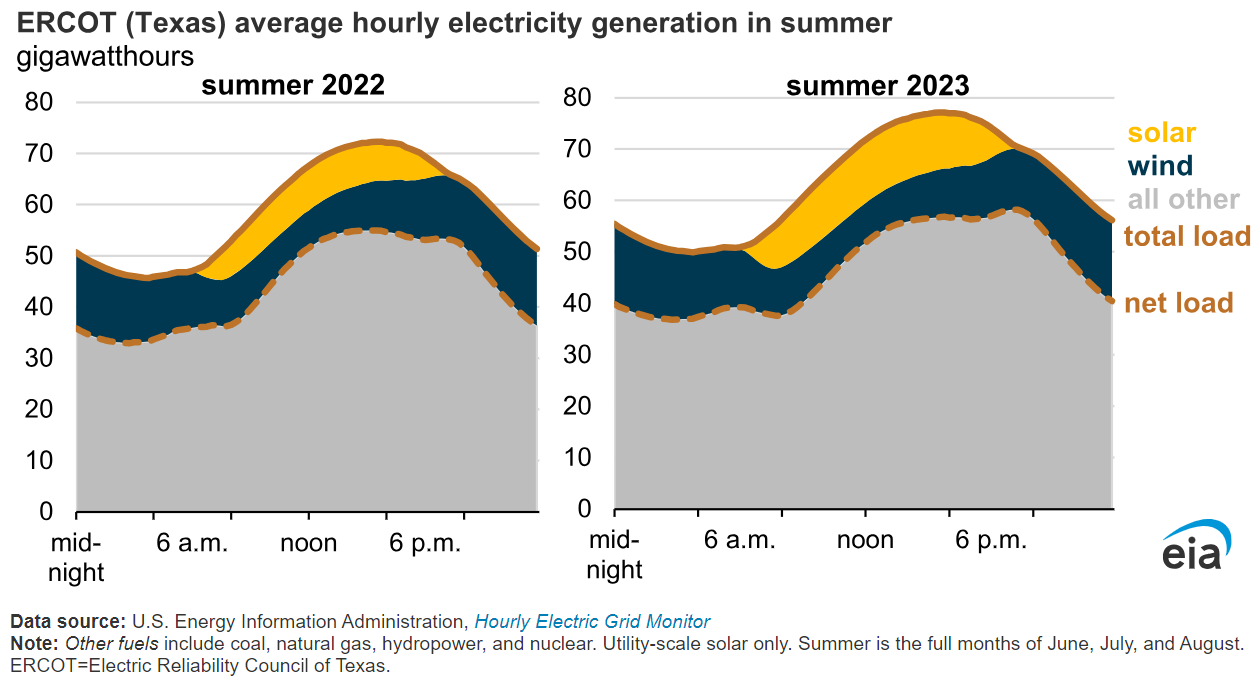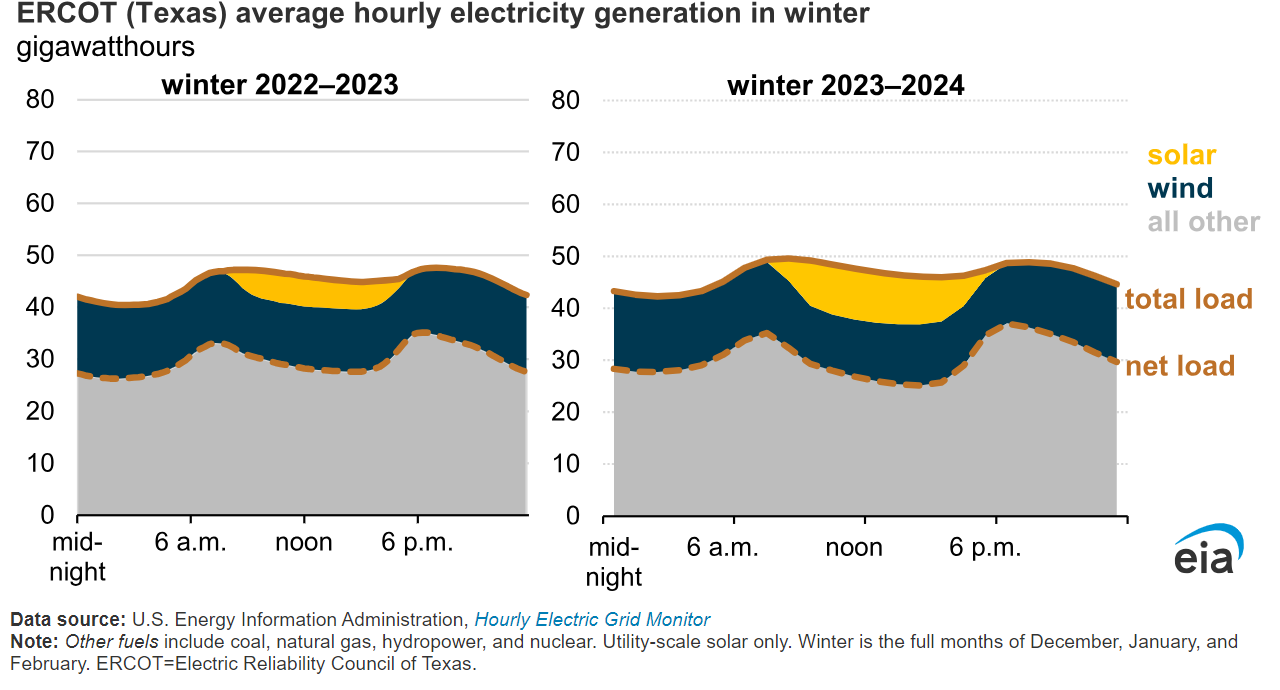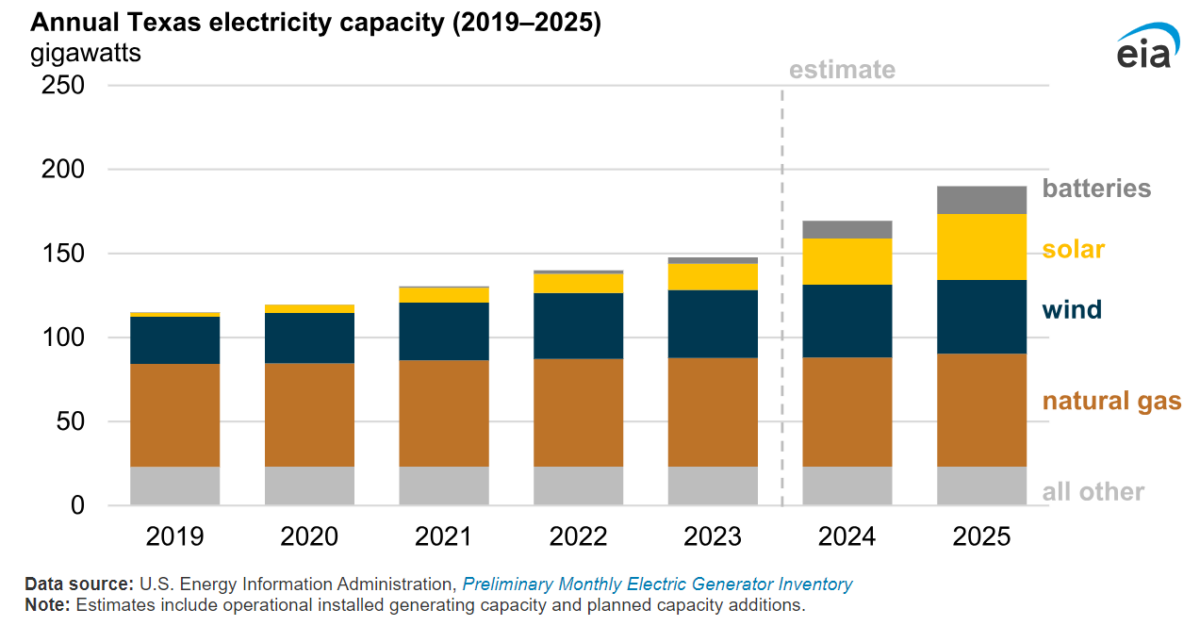From pv magazine USA
Texas led the United States in solar installations in 2023, and it is projected to continue its leadership through the next five years, with the Solar Energy Industry Association (SEIA) expecting more than 40 GW of capacity additions. To place this solar boom in context, the entire United States had just 40 GW of total cumulative installed solar capacity in 2016, according to SEIA.
The effect of solar on the Texan grid is starting to have tangible effects on the daily supply of electricity, according to a report by the EIA. Solar, now often paired with flexible battery energy storage, is helping serve seasonal and daily intermittent electricity demand, helping to squeeze out natural gas plants.
“With more solar capacity on the ERCOT electricity grid, we expect less use of natural gas generation during the middle of the day when solar generation displaces it,” said the EIA. “We also expect less use of natural gas in the summer when electricity demand is at its highest in Texas.”

However, the EIA expects natural gas to continue to play a role in the ERCOT grid. The intermittent cycles of solar and wind generation lead to an evening mismatch of supply and demand, typically around the hours of 6:00 pm to 8:00 pm. This mismatch is sometimes referred to as the “duck curve,” a phenomenon familiar to grid operators in California.
“As solar power generation declines later in the afternoon, natural gas is dispatched to meet the electricity demand,” said the EIA. “Wind generation also increases in the evening, limiting the need for additional generation from natural gas or other dispatchable resources.”
Energy storage is increasingly important in closing this supply and demand gap and negating the need for emissions-causing natural gas burning. Many energy storage projects being deployed in Texas today range between one to four hours of duration, serving the use case of dispatching electricity when it is needed most.
Natural gas peak demand plants or “peaker” plants are among the most inefficient uses of natural gas reserves. A study from Sandia National Laboratories explores this issue and how energy storage is expected to replace natural gas peakers.
This is reflected in the capacity additions planned for ERCOT. The EIA expects 13 GW of battery storage capacity to be added between the time of this report and 2025. Over the same period, 3 GW of natural gas additions are expected.
Solar generation has increased significantly over a year for Texas. In winter 2022-23, peak generation was 2.1 GWh, and in 2023-24, it reached 3.8 GWh, said the EIA. Wind production remained relatively flat, though it remains a larger source of electricity than solar on the ERCOT grid. In the summer of 2022, the maximum hourly average solar generation was 3.9 GWh and increased to 5.3 GWh in the summer of 2023.

Solar generation increased 35% year over year in the state, and 16 GW of solar was added in 2023 alone. Developers are expected to add another 24 GW in 2024 and 2025, while wind power is expected to increase by 3 GW of capacity.
This content is protected by copyright and may not be reused. If you want to cooperate with us and would like to reuse some of our content, please contact: editors@pv-magazine.com.




When I stop laughing, I will comment. LOL. This is a pipe dream. Can’t be sustainable long term. The only people who do not understand that are the uneducated and those who make money off of fooling the uneducated. BTW, I am a multi disciplined engineer with 30 years of experience in the field. I am not just a guy.